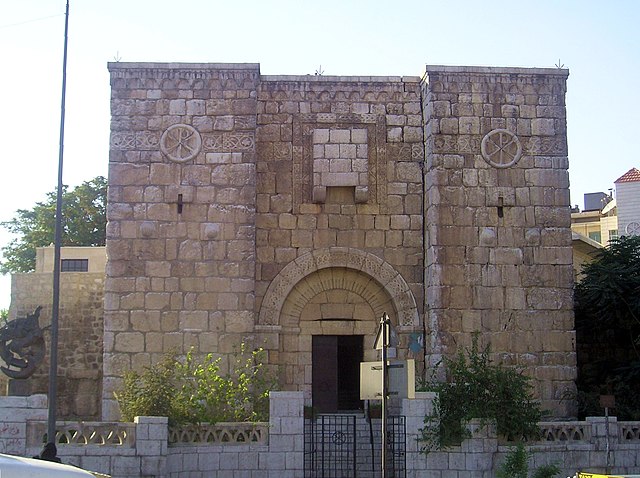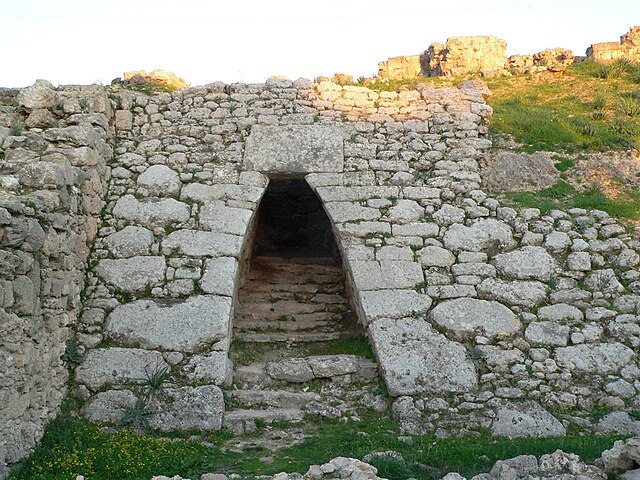A machicolation is a floor opening between the supporting corbels of a battlement, through which stones or other material, such as boiling water, hot sand, quicklime or boiling cooking oil, could be dropped on attackers at the base of a defensive wall. A smaller version found on smaller structures is called a box-machicolation.
A box-machicolation of the Tal-Wejter Tower, in Birkirkara, Malta
Bab Kisan (Kisan Gate), now the façade of the Chapel of Saint Paul in Damascus, with a box-machicolation above the main entrance
15th-century machicolations at Craigmillar Castle in Scotland
Decorative machicolation at Penrhyn Castle in north Wales, which was built between 1822 and 1837
In architecture, a corbel is a structural piece of stone, wood or metal jutting from a wall to carry a superincumbent weight, a type of bracket. A corbel is a solid piece of material in the wall, whereas a console is a piece applied to the structure. A piece of timber projecting in the same way was called a "tassel" or a "bragger" in England.
An interior look at the roof of a corbelled house in South Africa
Corbels quarried for London Bridge but unused; Swell Tor quarry, Dartmoor
Romanesque corbel table featuring erotic scenes at Colegiata de Cervatos, near Santander, Spain
Corbelled arch at the Royal Palace of Ugarit, 2nd millennium BC








